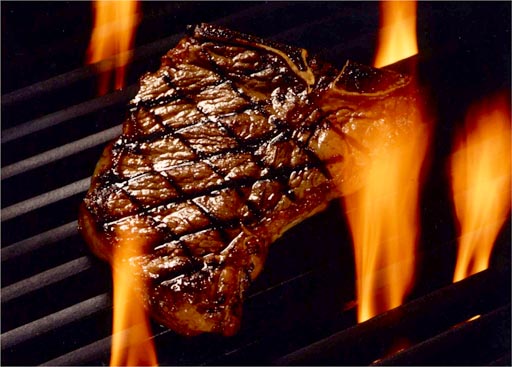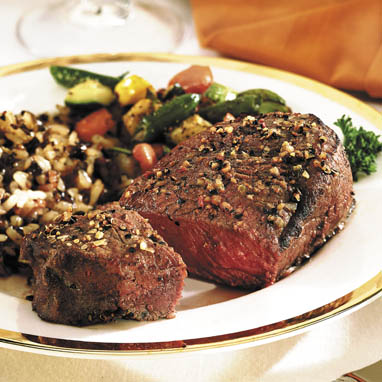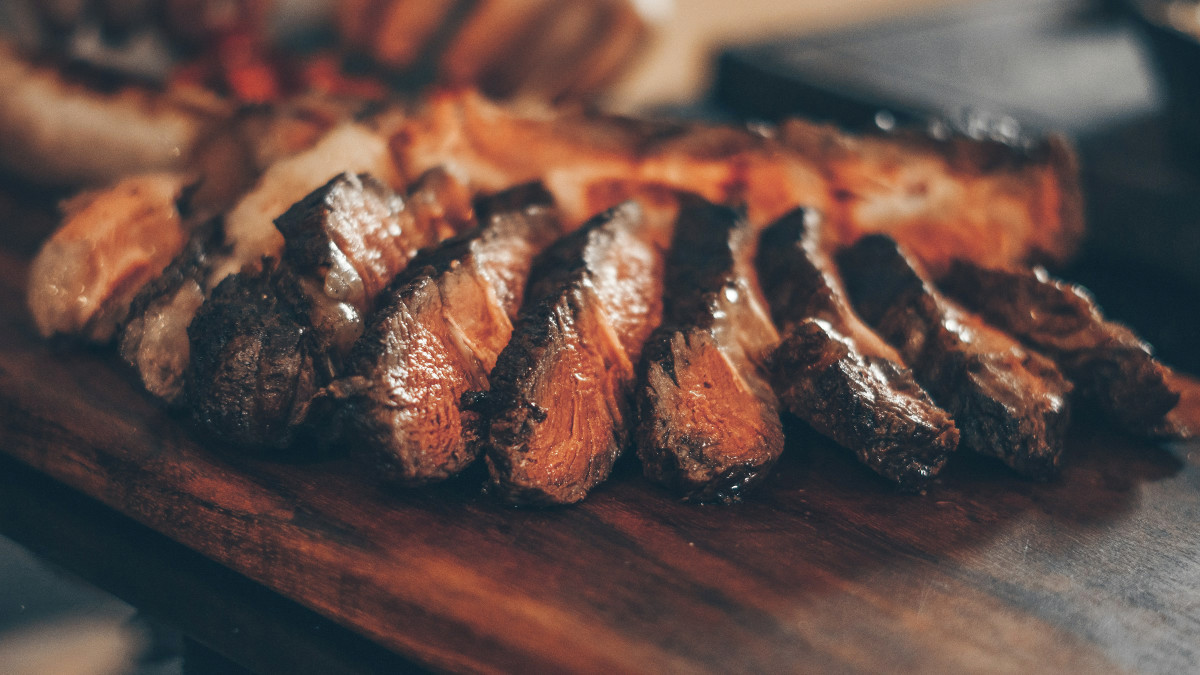- HubPages»
- Food and Cooking»
- Main Dish & Side Dish Recipes»
- Beef Recipes
Fascinating Food - Steak - How to Season and Cook your Steak

Fascinating Food – Steak – How to Season and Cook your Steak
So you’ve decided to have a steak for dinner tonight, but now that you have your beautiful piece of beef fresh from the butcher in your hands you’re not too sure what to do with it: or how!
Which cut of Steak
The first step is to work out what cut of steak you have. There are several different types of beef cuts, and they all come from different parts of the Cow. Some cuts of steak are full of fat; others are very lean. Some are tough, some are naturally soft. Some are full of flavour, other’s less so. Every cut of steak will differ so make sure you know exactly what you are buying when you buy it.
The Low fat tougher steaks, like sirloin, skirt, flat iron, hanger steaks, round steaks, or flank steaks are best for marinating. More high fat softer steaks like Rib-eye, porterhouse, T-bone or filet mignon are full of flavour themselves and not worth marinating. These fattier softer steaks are usually full of taste, and using seasoning will only ruin the natural flavours. In some rare occasions it is possible to use seasoning to enhance the flavours of these better cuts of meat, but as a rule of thumb I would say avoid it unless you are very familiar with the technique.
After all; why would you want to prepare a steak then hide that great rich succulent meaty flavour?
If you buy a steak, but are not sure what cut of meat it is, make your marinating decision based on the price. The more expensive the cut of meat, the more unlikely it is to need marinating. It’s not a perfect rule of thumb, but it’s as close as you can get without trying to identify the steak based on its look or feel.
Should I Wash my Steak?
The first step to seasoning your steak is to wash and prepare it. A lot of people will tell you not to wash your steak as the cooking process itself will kill of all bacteria; or that washing it in the sink will only ‘splash’ the germs around your kitchen. Others will say you should always wash it as you don’t know if it’s been dropped on the floor or some other dirty surface.
My suggestion is this; if the steak has a bone in it always wash it. Usually butchers or supermarkets will use a mechanical bone saw to cut through the steak. To avoid any residue left from the saw on the meat a quick wash would help. If the meat is boneless a wash would not harm, but personally I don’t think it would help. If you are worried about splash back of bacteria, many people wipe down their steaks with a wet tissue instead.

How to Season your Steak
Place your steak on a chopping board and grab a sharp kitchen knife. Turn your knife flat on its side and push the steak down. This will help you work out how soft the steak is. A good steak should depress about one third. If it depresses less you know it’s a ‘hard’ cut of meat. If it depresses more then it’s a ‘soft’ cut of meat. One of the main reasons to marinade steak is to tenderise (or soften) the meat. This knife test will help you work out how much marinade to add, and for how long to marinade the meat.
Marinade words by acids breaking down muscle tissue; and it does so very slowly. If the piece of steak is thick, the surface of the steak can get quite sour by the time the marinade works its way through to the centre. A simple solution is to cut the steak into many small slices. This will give a greater surface area for the marinade to work itself into. Alternatively cut slices into the steak that only penetrate about half way; this will keep the steak as a whole but allow the marinade to seep in.
Be warned though, slicing steak prior to cooking greatly increases the chances of the steak being touch and dry; so adjust your cooking times accordingly.
Take your chosen marinade and use your fingers to gently fold it into the meat. When you start to feel the marinade rubbing into the meat, slip the steak and the remaining marinade into a zip lock bag and massage further. This will help ensure the marinade does not work its way into your fingers instead of the steak!
Leave the marinated Steak in the fridge for between two and twenty four hours to let the marinade soak in before cooking.
How to cook your Steak
Start by heating a frying pan over a medium – high heat. Rather than oiling the pan, brush the steak with oil to prevent it sticking. Always use tongs to handle the steak after removing them from the fridge, this will help as they won’t pierce the steak and release all the juices.
Based on a 2cm thick steak, cook it as follows:
· For Rare: Two to Three minutes each side
· For Medium: Four minutes each side
· Well Done: Five to Six minutes each side
Turn the steak only once to avoid drying out. To test your steak press the centre with the tong handles. The steak will feel soft if it’s rare, slightly firmer and springy when it’s medium and very firm when it’s well done.
Transfer the steak to a plate and cover it with foil. Leave it to rest for at least five minutes to allow the juices to settle, and the muscle fibres to relax. This will help ensure it’s a tender steak. If you are planning on making a steak sauce, it’s a great time to finish it while the steak rests.





